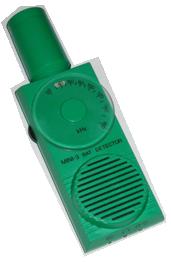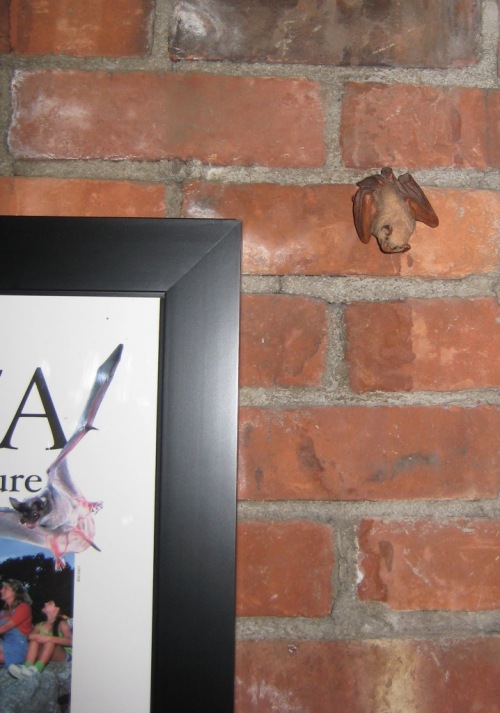Bat detectors are just about one of the coolest things you can have if you are interested in bats. But what is a bat detector? And how does it detect bats? To answer these questions we first need to learn a little more about the bats themselves.
We all know that bats are nocturnal (active at night) and that the bats that live in New York are insectivores (feed only on insects). The question that often comes up is “just how do bats fly around in the dark and manage to catch mosquitoes and other insects without running into things?” The answer is echolocation. Bats use sound to find their way through the night sky. As they zip and zoom in the air above our heads, bats are constantly making noises. The noises bounce or echo off of anything that is in front of them. With their large ears, the bats hear the echoes and the sounds create a map in their minds of the landscape in front of them.
One of the coolest things about echolocation is that the noises the bats make are so high pitched that our tiny human ears can’t hear them. (This is a good thing. If you think spring peepers are hard to sleep through just imagine how loud it would be if you could hear all of the bats.) Enter the bat detector.

Bat detectors are kind of like universal translators (for all of you Star Trek fans). The detector translates the echolocation calls of bats so that we can hear them. By hearing the bats’ echolocation calls we can get a better understanding of how bats find their way and their food but, we can also hear every time they catch an insect – even when it’s too dark to see the bats.
As bats are echolocating the sounds that come out of the bat detector sound like a series of clicks. As the bats get closer to an insect the clicks get faster until, just before they catch the insect, we hear a sound that sounds a little bit like a zipper. This sound is called a “feeding buzz.” The feeding buzz tells us that the bat just caught something.
Now imagine you are out on your front lawn, relaxing in the soft grass, and enjoying the evening bat show overhead – but now there’s a soundtrack. Who needs fireworks when there are bats flying overhead?
Bat detectors aren’t just for fun, they are also used by bat biologists to help study bats and survey bat populations. Thanks to some very fancy bat detectors and sophisticated computer programs, scientists can distinguish the echolocation calls of different species. By combining bat detectors with other survey techniques, scientists can get a more accurate picture of bat populations.
Where can I get my own bat detector? Well, all bat detectors are not created equal. The cheapest bat detectors I have seen were about $50 and you had to put them together yourself. I’ve never used one of the inexpensive varieties so I can’t speak to their usefulness. The most expensive detectors I have seen run about $1850, with a whole range of prices in between.
I have had the detector pictured above for 20 years now and it is still working great. Despite its cheap green appearance it cost around $250. The benefit of more expensive detectors is being able to tune to a wide range of frequencies. (Not all bats echolocate at the same frequency.) Less expensive models are generally tuned only to one frequency.
Of the one-frequency models available, I have seen ones for as little as $99, but they are getting harder to find. Check out the links below to see what’s out there and do some searching on your own as well.
www.batcatalog.com
www.acornnaturalists.com
www.scientificsonline.com
To hear what echolocation sounds like follow this link:
www.econvergence.net/feedbuzz.wav










